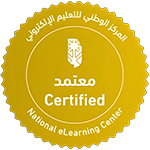Scikit-Learn is one of the most popular Python libraries for machine learning. It provides simple and efficient tools for data mining and data analysis, built on top of NumPy, SciPy, and matplotlib. Whether you are a beginner or an experienced data scientist, Scikit-Learn offers a robust framework for building predictive models.
Model Building with Scikit-Learn: A Comprehensive Guide
evolve-1.

Scikit-Learn
Data Preparation
Before building any model, it's essential to preprocess and prepare your data. This step includes handling missing values, encoding categorical variables, normalizing features, and splitting data into training and testing sets.
Choosing the Right Model
Scikit-Learn provides a variety of algorithms for classification, regression, clustering, and dimensionality reduction. Choosing the right model depends on your data type and problem objective. Common models include linear regression, decision trees, support vector machines, and k-nearest neighbors.
Training Your Model
Once you've selected a model, training involves feeding the algorithm your training data to learn patterns. Scikit-Learn's .fit() method is used for this purpose. Ensure that your training data is representative and sufficient for the model to generalize well.
Evaluating Model Performance
Evaluation metrics vary depending on the type of problem. For classification, common metrics include accuracy, precision, recall, and F1 score. For regression, metrics like mean squared error and R-squared are used. Use Scikit-Learn's built-in functions to calculate these metrics on your test dataset.
Model Tuning and Optimization
To improve your model's accuracy, consider hyperparameter tuning using techniques such as Grid Search or Random Search available in Scikit-Learn. This process systematically tests different parameter combinations to find the best fit for your data.
Practical Example: Predicting Housing Prices
Walk through a real-world example by building a regression model to predict housing prices. Learn how to load datasets, preprocess data, train a linear regression model, and evaluate its performance.
Conclusion
Building models with Scikit-Learn is accessible and efficient. With practice, you can leverage its powerful tools to solve complex machine learning problems and drive data-driven decisions.
read also about




